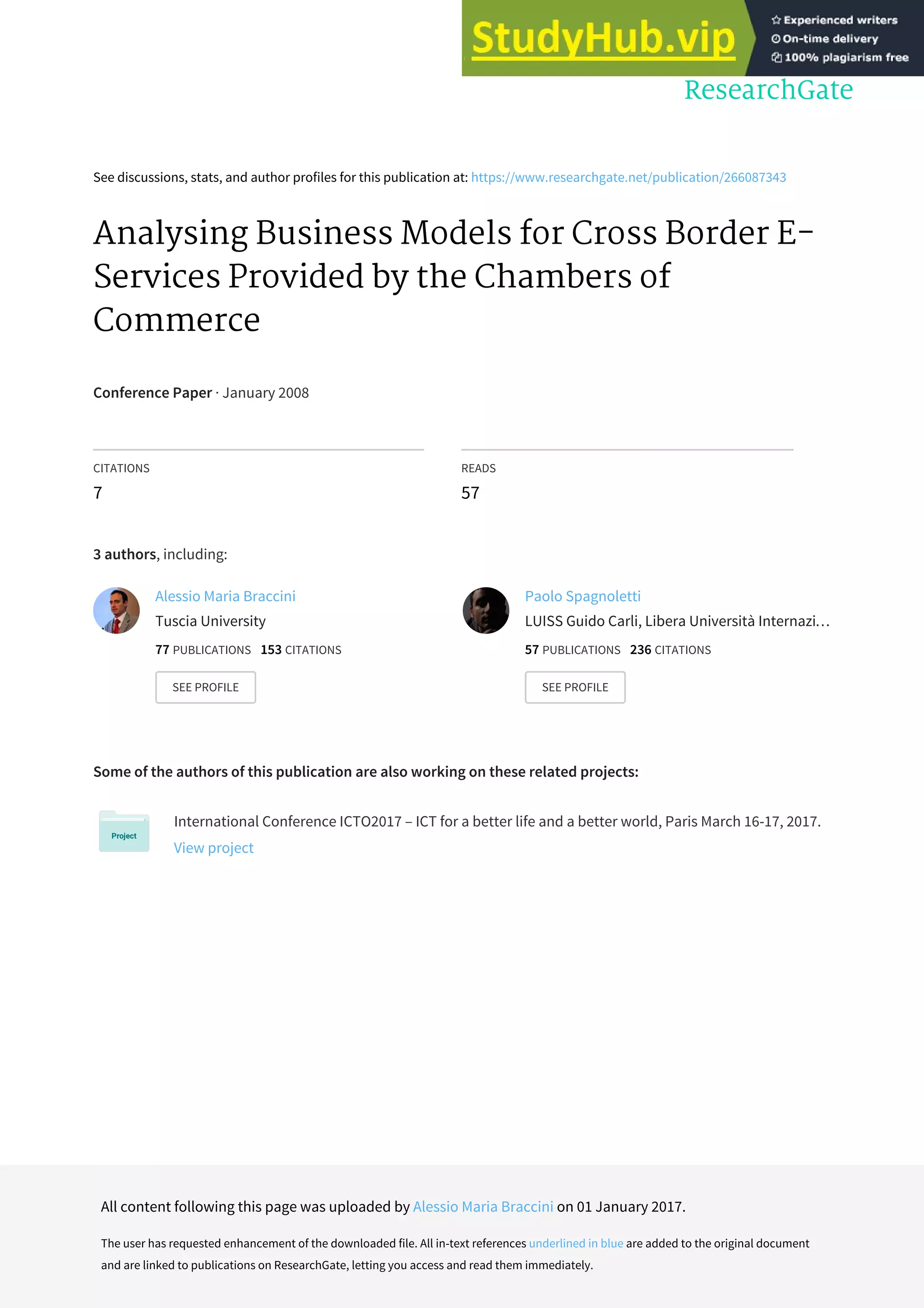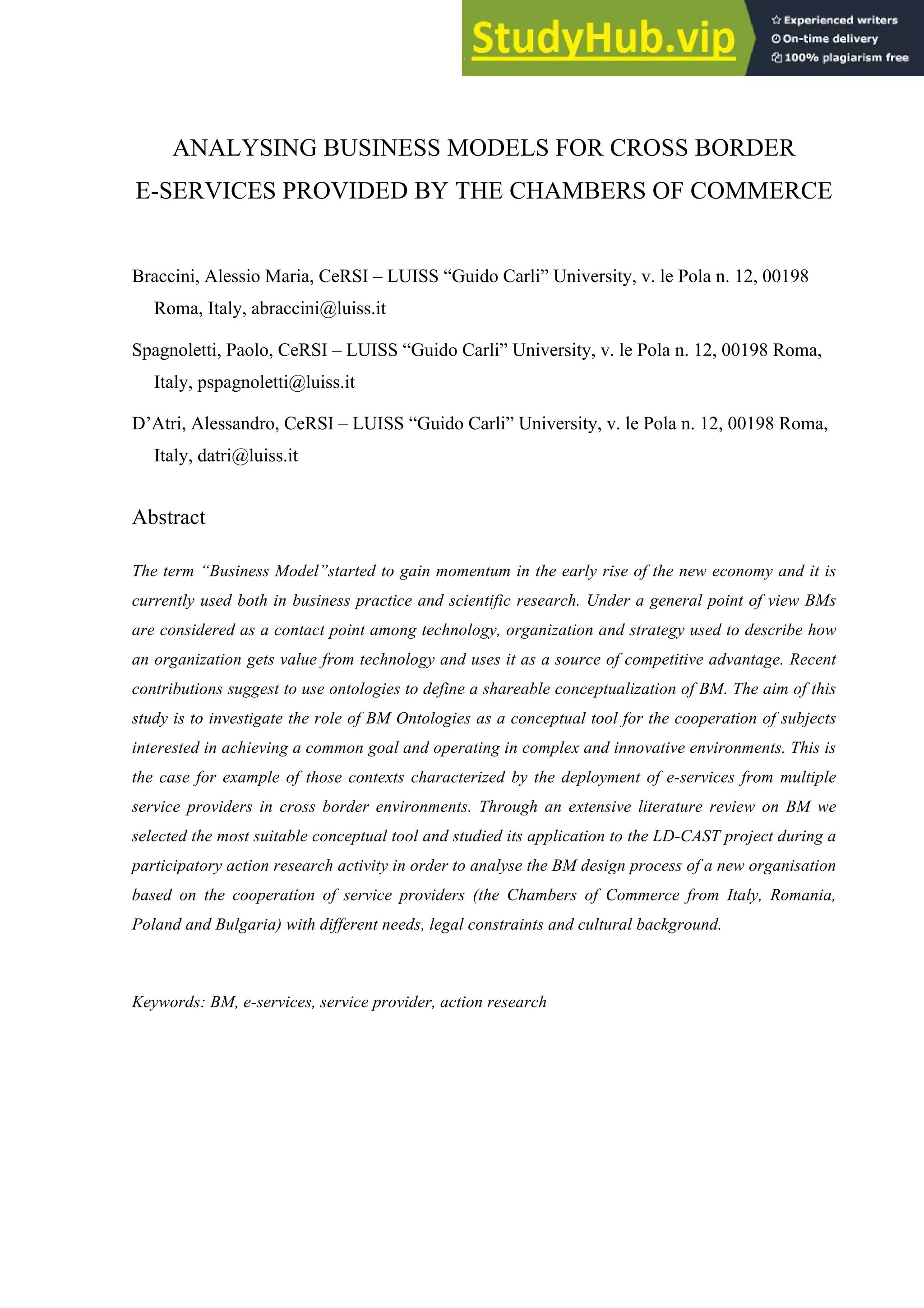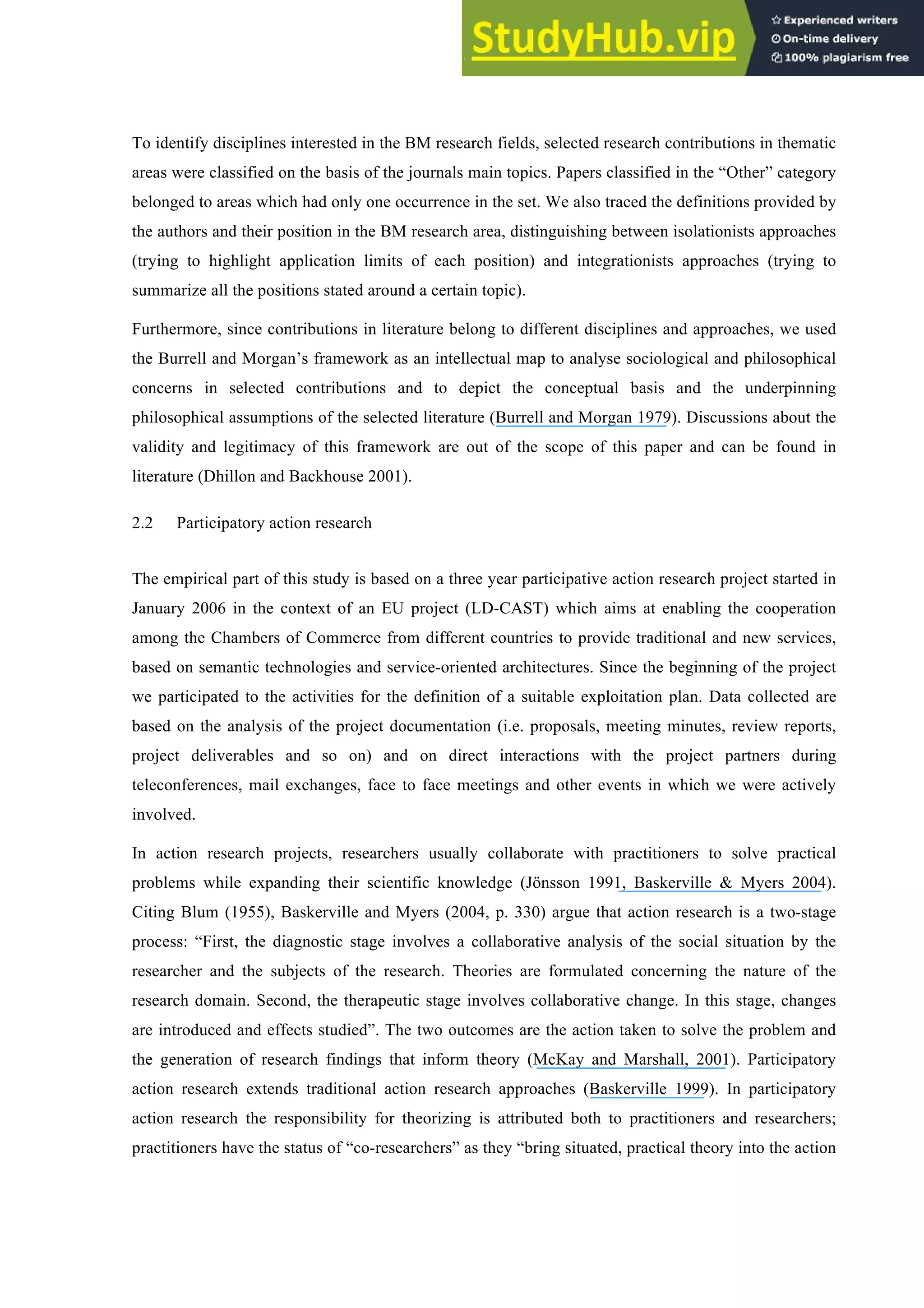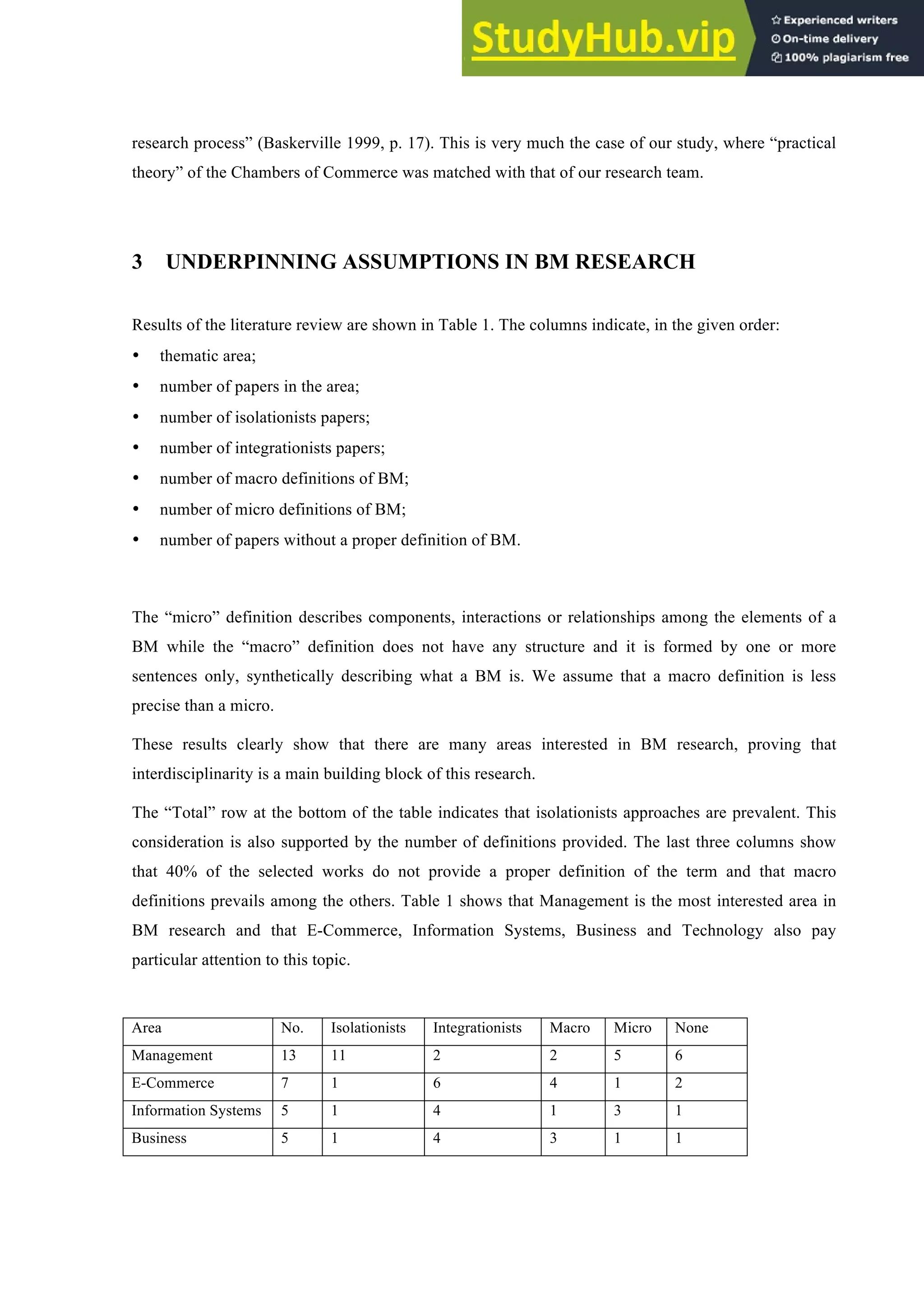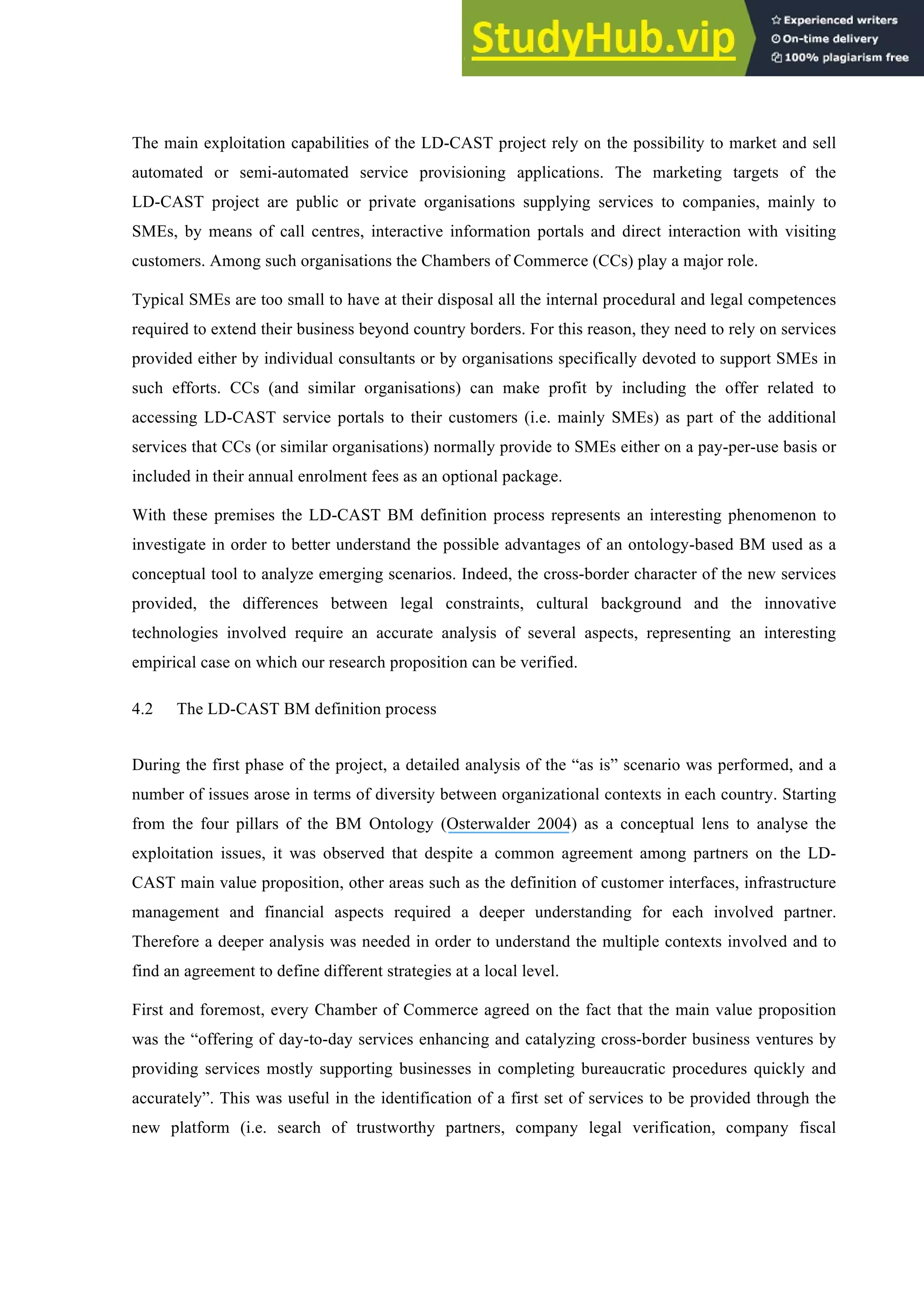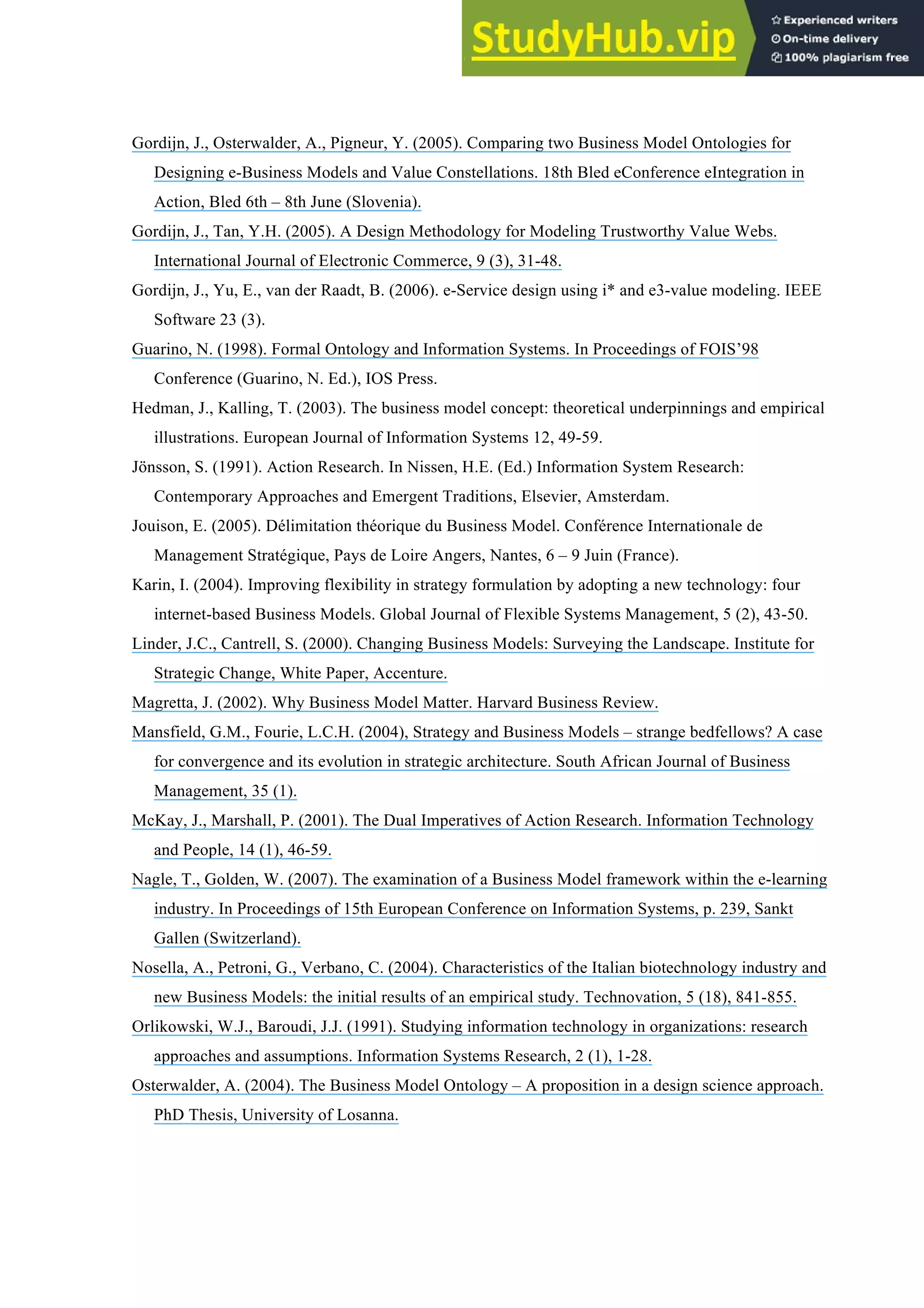This document analyzes business models for cross-border e-services provided by Chambers of Commerce. It discusses definitions of business models from literature and how ontologies have been used as conceptual tools. The document then describes applying a business model ontology to analyze the business model design process for a new organization involving cooperation between Chambers of Commerce from Italy, Romania, Poland and Bulgaria, who have different needs, legal constraints and cultures.
